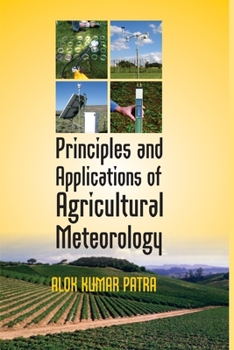Principles and Applications of Agricultural Meteorology
Select Format
Select Condition 
Book Overview
Weather and climate is a natural resource which is considered as a basic input in agricultural planning. It affects all the agricultural activities directly or indirectly. Agrometeorology is primarily concerned with the interactions among meteorological, hydrological and pedological factors that influence production systems in agriculture and allied sectors like horticulture, animal husbandry, fishery, forestry, etc. Thus the role of an agrometeorologist is to define all these interactions, to correlate physical environments with biological responses and apply the relevant meteorological skills to help farmers for exploiting weather conditions and improve agricultural production both in quality and quantity. In this backdrop, agrometeorology has been recommended as a core subject in the curriculum of B. Sc. (Agriculture), B. Sc. (Horticulture) and B. Sc. (Forestry) courses of the agricultural universities. Keeping this in view, this book has been written for the undergraduate students. The common people, who watch weather phenomenon and take an interest in it, would also find it worth reading. This book is primarily based on the syllabus of the course 'Agricultural Meteorology' meant for under graduate students of agriculture, horticulture and forestry. This book has been divided into twenty three chapters covering all aspects of agrometeorology. Concepts, definition, importance and scope, history and future needs of agrometeorology are described in Chapter 1. Chapter 2 details the basic information of atmosphere. Chapter 3 to chapter 13 include the weather parameters like radiation, temperature, humidity, evaporation, fog and dew, pressure, wind, clouds, monsoon and precipitation and their importance in agriculture. Applied aspects of meteorology like climatic hazards, agroclimatic classification, micrometeorology of crops, weather in relation to crop pests and diseases, weather in relation to animal production, climate change, weather forecasting, remote sensing and crop simulation modelling are discussed in Chapter 14 to chapter 22. Chapter 23 describes the features of an agrometeorological observatory.
Format:Paperback
Language:English
ISBN:8119254201
ISBN13:9788119254200
Release Date:July 2023
Publisher:Nipa
Length:436 Pages
Weight:1.28 lbs.
Dimensions:1.2" x 6.0" x 9.0"
Related Subjects
Engineering Science Science & Math Science & Scientists Science & Technology TechnologyCustomer Reviews
0 rating





